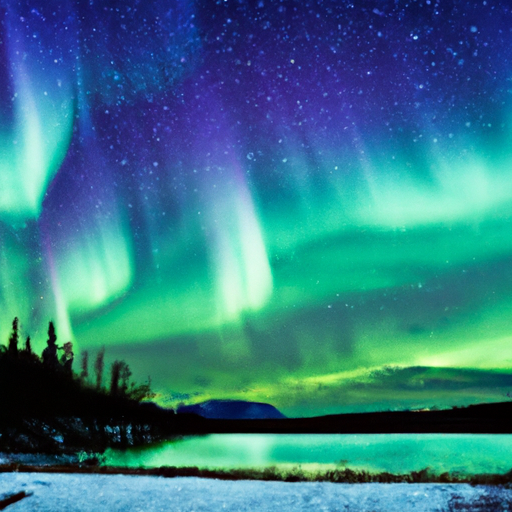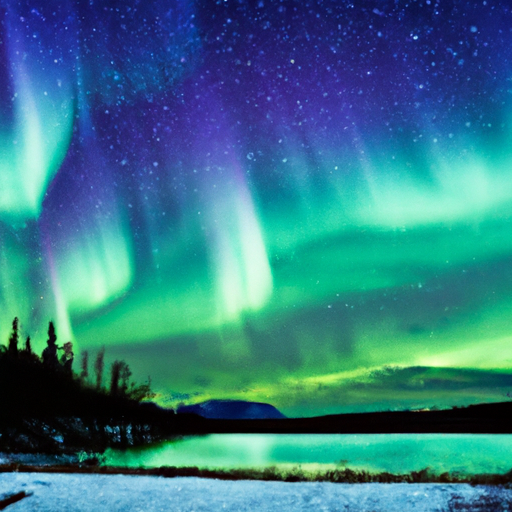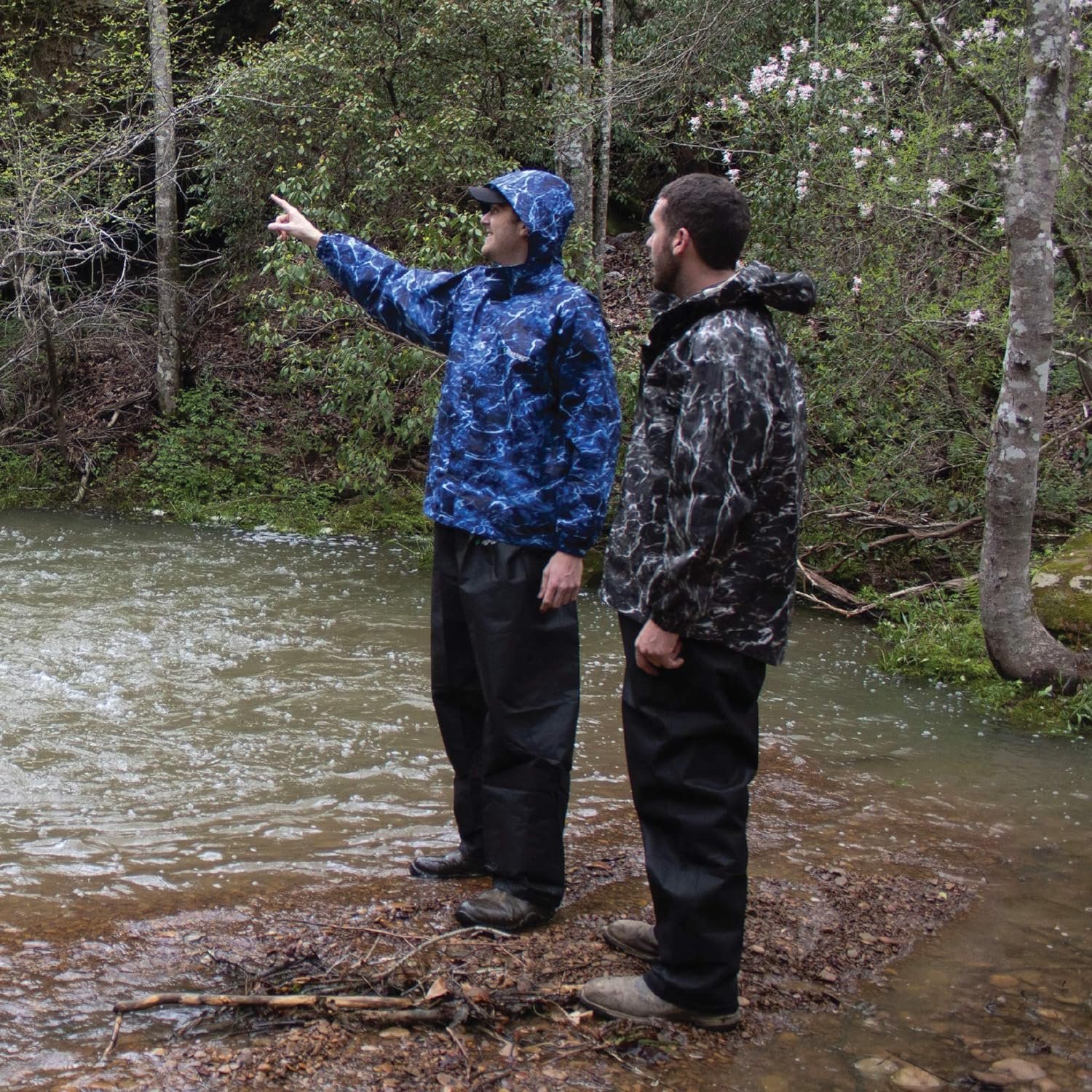Imagine looking up at the night sky and being greeted by a breathtaking display of vibrant colors dancing across the darkness. That’s the allure of the Northern Lights, a mesmerizing natural phenomenon that has fascinated and captivated people for centuries. But how likely is it to witness this awe-inspiring spectacle? Brace yourself for an exploration into the odds of catching a glimpse of the Northern Lights and uncover the secrets behind this elusive beauty.
How Likely Is It To See Northern Lights?
Table of Contents
Factors that Affect Northern Lights Visibility
The Northern Lights, also known as the Aurora Borealis, are a breathtaking natural phenomenon that captivates people from all over the world. The ethereal display of vibrant colors dancing across the night sky is a sight that everyone should experience at least once in their lifetime. However, the visibility of the Northern Lights can vary greatly depending on several factors. In this article, we will explore the main factors that affect the visibility of the Northern Lights, as well as provide tips on how to maximize your chances of witnessing this awe-inspiring phenomenon.
Geographical Location
One of the most significant factors that determine the visibility of the Northern Lights is your geographical location. The closer you are to the Arctic Circle, the higher your chances of witnessing this natural wonder. The Arctic Circle is an imaginary line located at approximately 66.5 degrees north latitude, marking the southernmost point at which the sun can remain continuously below or above the horizon for 24 hours.
Proximity to the Arctic Circle
Being in close proximity to the Arctic Circle significantly increases your chances of experiencing the Northern Lights. Countries such as Norway, Finland, Sweden, Iceland, and Canada, which are situated near the Arctic Circle, offer prime viewing opportunities. The Northern Lights are more commonly seen in these regions due to their proximity to the geomagnetic pole.
Longitude
Longitude is another factor that can influence Northern Lights visibility. In general, the farther east you are from the Prime Meridian (0 degrees longitude), the greater your chances of spotting the Northern Lights. This is because the northern geomagnetic pole is located closer to the eastern hemisphere, making sightings more frequent in countries like Russia and Norway.
Latitude
Latitude plays a crucial role in determining the visibility of the Northern Lights. The closer you are to the Earth’s magnetic poles, the higher the chances of witnessing this celestial spectacle. Northern regions such as Alaska, Greenland, and northern parts of Scandinavia, which lie at higher latitudes, often offer spectacular displays of the Northern Lights.

Solar Activity
Solar activity is another vital factor that influences the visibility of the Northern Lights. The Northern Lights occur when charged particles from the sun collide with atoms and molecules in the Earth’s atmosphere, releasing energy in the form of colorful light. Various solar phenomena can affect the intensity and frequency of these collisions, ultimately impacting the visibility of the Northern Lights.
Sunspot Cycle
The sunspot cycle, which typically lasts around 11 years, has a significant impact on the visibility of the Northern Lights. Sunspots are dark areas that appear on the sun’s surface and are known to be associated with increased magnetic activity. During periods of high solar activity, the chance of witnessing the Northern Lights is heightened. Conversely, during periods of low solar activity, known as the solar minimum, sightings may be less frequent.
Solar Flares
Solar flares, or sudden eruptions of magnetic energy on the sun’s surface, can have a substantial effect on the visibility of the Northern Lights. When solar flares occur, they release vast amounts of charged particles into the solar system, increasing the chances of a geomagnetic storm. Geomagnetic storms, in turn, enhance the visibility and intensity of the Northern Lights. Monitoring solar flare activity can provide valuable insights into the likelihood of witnessing this mesmerizing display.
Geomagnetic Storms
Geomagnetic storms, caused by disturbances in the Earth’s magnetosphere due to solar wind, are another factor that affects the visibility of the Northern Lights. When the solar wind, composed of charged particles from the sun, interacts with the Earth’s magnetic field, it can create geomagnetic storms. These storms can amplify the visibility of the Northern Lights by intensifying the collisions between solar particles and atmospheric atoms. Monitoring space weather conditions and geomagnetic storm forecasts can help determine optimal viewing times.
Weather Conditions
Aside from the geographical and solar factors, weather conditions also play a vital role in determining the visibility of the Northern Lights. Clear skies, minimal cloud cover, and low light pollution are ideal conditions for spotting the aurora.
Clear Skies
Clear skies are essential for optimal Northern Lights visibility. Cloud cover obstructs the view of the night sky, making it difficult to witness the aurora. Planning your trip during periods of low cloud coverage increases your chances of experiencing an unobstructed view of this natural wonder. Keeping an eye on weather forecasts and selecting nights with minimal cloud cover can significantly enhance your chances of seeing the Northern Lights.
Cloud Cover
Cloud cover is one of the most significant challenges in spotting the Northern Lights. Even if you are in a region known for frequent aurora sightings, heavy cloud cover can obscure the visibility of the celestial display. It is crucial to choose a location with a low probability of cloud cover, as this increases the likelihood of witnessing the aurora in all its glory.
Light Pollution
Light pollution from cities, towns, and other artificial sources can inhibit the visibility of the Northern Lights. The glow from streetlights and buildings can diminish the contrast between the aurora and the night sky, making it harder to spot. To maximize your chances of seeing the Northern Lights, consider venturing to remote locations or national parks with minimal light pollution. These areas provide a darker and clearer sky, offering a better chance of witnessing the vibrant colors of the aurora.

Best Places to See Northern Lights
If you are determined to witness the Northern Lights, there are specific locations renowned for their prime viewing opportunities. These places offer the perfect combination of geographical location, optimal latitudes, and low light pollution.
Countries near the Arctic Circle
Countries situated near the Arctic Circle, such as Norway, Finland, Sweden, Iceland, and Canada, are popular destinations for Northern Lights enthusiasts. These regions experience frequent auroral activity due to their proximity to the geomagnetic pole. Additionally, they offer a range of accommodations, tours, and facilities that cater to visitors seeking the Northern Lights experience.
Optimal Latitudes
Traveling to regions situated at higher latitudes increases your chances of seeing the Northern Lights. Locations like Fairbanks in Alaska, Tromsø in Norway, and Abisko in Sweden are known for their high success rates in Northern Lights sightings. These regions lie within the optimal latitudes to witness the aurora in all its splendor.
Remote Locations with Low Light Pollution
For an enhanced Northern Lights experience, consider venturing to remote locations with minimal light pollution. National parks, such as Denali National Park in Alaska or Jokulsarlon Glacier Lagoon in Iceland, offer breathtaking views of the Northern Lights against a backdrop of untouched nature. These remote destinations provide darker skies and an increased chance of witnessing the aurora in its full glory.
Northern Lights Forecast
To increase your chances of spotting the Northern Lights, it is beneficial to stay informed about space weather conditions and predictions. Various sources provide forecasts and real-time information on auroral activity, allowing you to plan your viewing time accordingly.
Space Weather Prediction Centers
Space weather prediction centers, such as the NOAA Space Weather Prediction Center or the Space Weather Prediction Center at the Met Office in the UK, monitor solar activity and provide forecasts on geomagnetic storm activity. These centers use data from satellites, solar observatories, and ground-based monitoring stations to predict and analyze solar flares, solar wind speed, and other indicators that influence Northern Lights visibility.
Solar Wind Speed
Solar wind speed is a crucial factor in determining the likelihood and intensity of Northern Lights sightings. Monitoring solar wind data can provide valuable insights into the timing and strength of geomagnetic storms. Increased solar wind speed is often an indicator of enhanced auroral activity and can help you plan your trip accordingly.
Kp Index
The Kp index, a measurement of geomagnetic activity, is used to determine the level of geomagnetic storm activity. The index ranges from 0 to 9, with higher values indicating a higher likelihood of Northern Lights visibility. Monitoring the Kp index can provide valuable information on the current and forecasted geomagnetic storm conditions, increasing your chances of witnessing the Northern Lights.
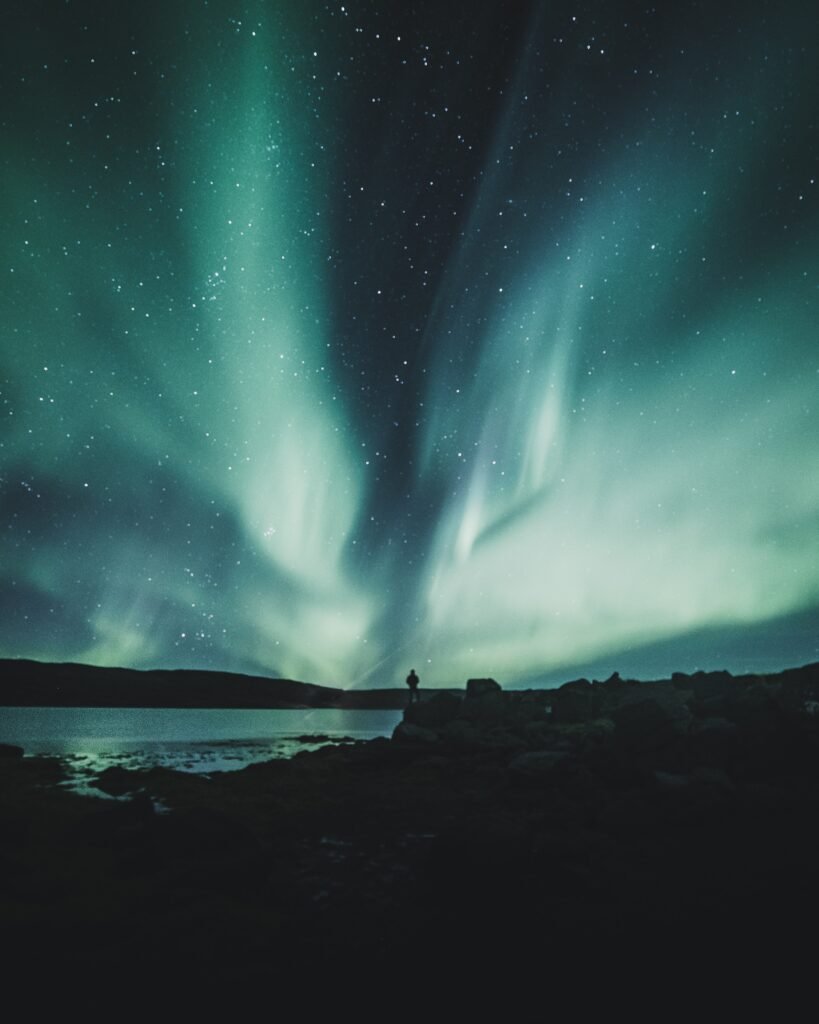
Time of Year
The time of year also plays a significant role in the visibility of the Northern Lights. While the aurora can be seen throughout the year, certain periods offer more favorable conditions for spotting this natural wonder.
Winter Months
Winter months, particularly in the Northern Hemisphere, are a prime time for Northern Lights sightings. The long nights and extended periods of darkness provide ample opportunities for the aurora to be visible. From November to March, the chances of witnessing the Northern Lights are often at their highest.
Equinox Periods
The spring and autumn equinoxes, which occur in March and September, respectively, are often associated with increased Northern Lights activity. During these times, the Earth’s magnetic field is more aligned with the solar wind, resulting in enhanced geomagnetic activity. Traveling during the equinox periods can maximize your chances of witnessing the Northern Lights.
Duration of Darkness
The duration of darkness also affects Northern Lights visibility. The longer the nights, the more opportunities there are to witness this natural phenomenon. Locations near the Arctic Circle, where the sun remains below the horizon for extended periods, provide optimal conditions for spotting the Northern Lights.
Challenges in Spotting Northern Lights
While the Northern Lights are a truly mesmerizing spectacle, spotting them can present some challenges. Understanding and preparing for these challenges can help improve your chances of a successful viewing experience.
Limited Visibility During Daylight
Due to the extended periods of darkness required to see the Northern Lights, spotting them during daylight hours is nearly impossible. This means that your best chances of witnessing the aurora occur during the night, necessitating planning your viewing times accordingly.
Unpredictable Nature of Auroras
Auroras are unpredictable by nature, often appearing with little warning and disappearing just as quickly. Even if you are in a prime viewing location during optimal conditions, there is no guarantee that you will witness the Northern Lights. Patience and persistence are key when it comes to pursuing this elusive phenomenon.
Patience and Persistence
Spending time in areas known for frequent Northern Lights sightings and being patient with the natural variability of the aurora can increase your chances of seeing this breathtaking display. It may take multiple attempts and several nights of waiting, but the reward of witnessing the Northern Lights is well worth it.
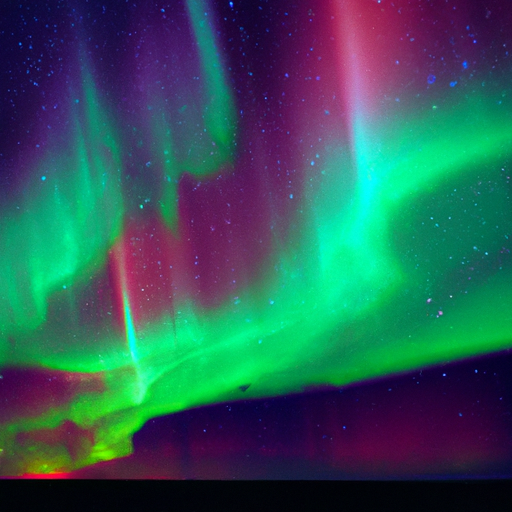
Tips for Maximizing Your Chances
While there are no guarantees when it comes to spotting the Northern Lights, some tips can help maximize your chances of experiencing this natural wonder.
Plan a Trip to Prime Locations
If witnessing the Northern Lights is high on your bucket list, consider planning a trip to one of the prime viewing locations near the Arctic Circle. Research the best times to visit, choose a location with low light pollution, and explore the range of accommodations and activities available to enhance your experience.
Monitor Aurora Forecasts
Keeping a close eye on aurora forecasts and space weather conditions can significantly improve your chances of spotting the Northern Lights. Subscribing to aurora alert services or regularly checking reliable prediction centers’ websites will provide you with up-to-date information on potential auroral activity, allowing you to plan your viewing time accordingly.
Stay Flexible with Travel Dates
Given the unpredictability of the Northern Lights, it is essential to remain flexible with your travel dates. If possible, allow for a few extra days in your itinerary to increase your chances of witnessing the aurora during a period of heightened activity. This flexibility gives you the advantage of adjusting your plans based on the most recent forecasts and space weather conditions.
Conclusion
The visibility of the Northern Lights is influenced by several factors, including geographical location, solar activity, and weather conditions. Being in a location near the Arctic Circle, monitoring solar activity and space weather conditions, and selecting nights with clear skies and minimal light pollution greatly enhance your chances of experiencing this captivating natural phenomenon. While spotting the Northern Lights presents challenges and requires patience, the reward of witnessing the vibrant colors dancing across the night sky makes it a truly unforgettable experience. So, plan your trip, stay informed, and embrace the awe-inspiring beauty of the Northern Lights.
